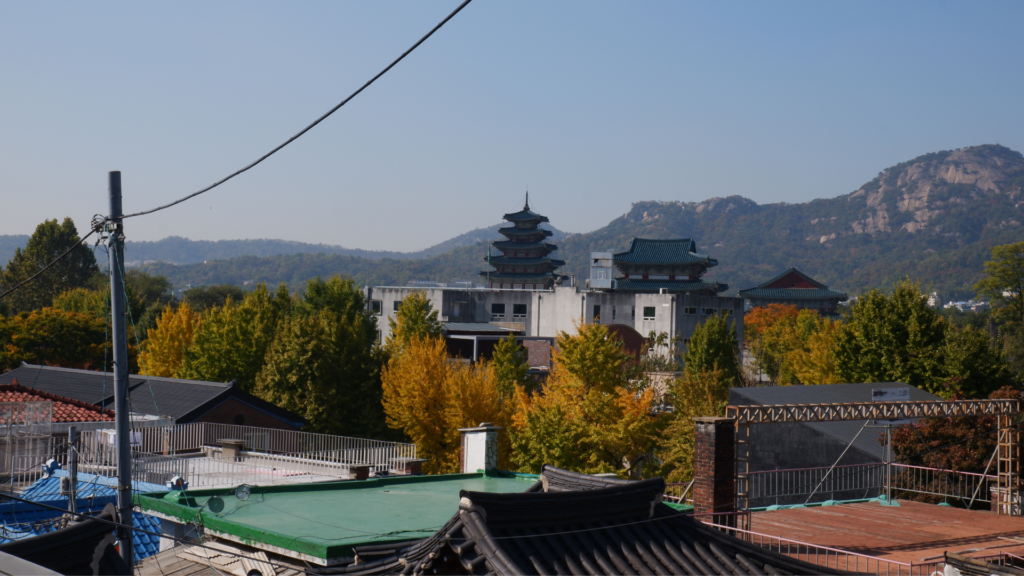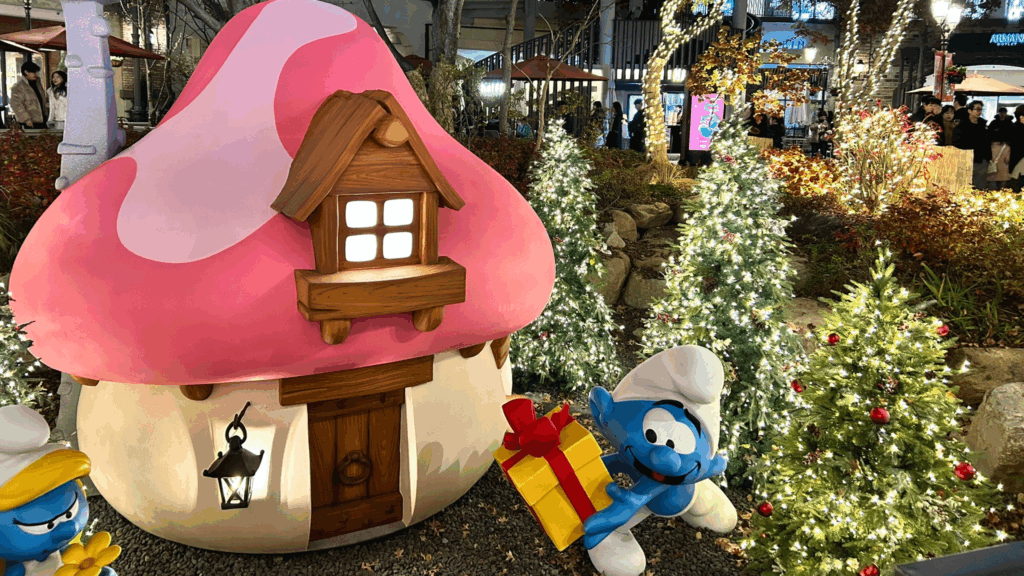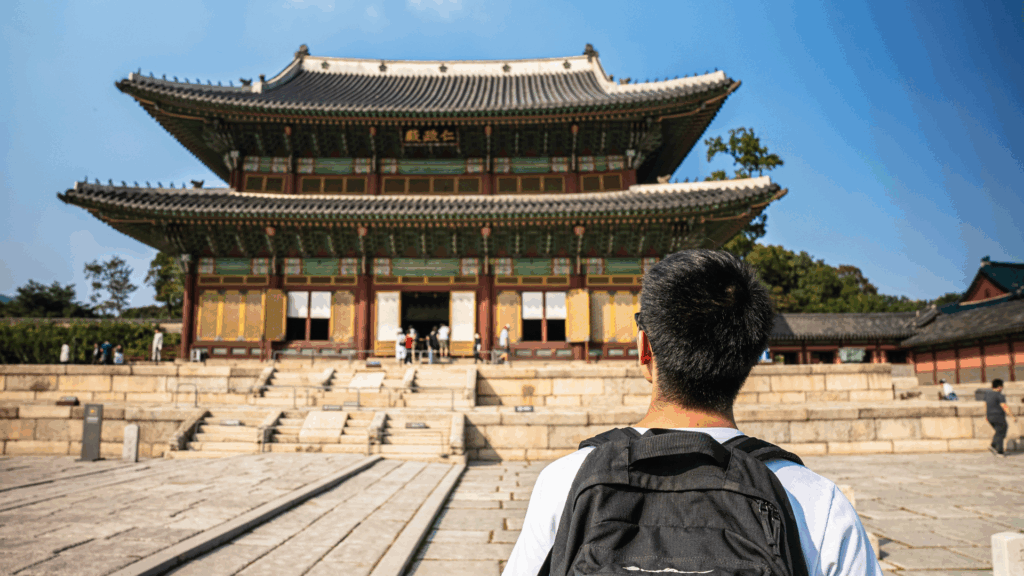As the weather is becoming cooler and the trees start shedding their leaves, there is a shift in popular food items in South Korea, especially traditional Korean dishes. Through this guide we will explore some of the most popular autumn food in Korea to try.

Popular Autumn food in Korea
Jeon | 전
Jeon, also known as ‘Korean savory pancakes’ are a staple Autumn food in Korea. Koreans are known for enjoying this food during the autumn season, especially during heavy rain. The sound of the pancakes being fried is said to mimic the sound of heavy rain. Jeon can be found at many traditional market stalls all across the country, but there are also dedicated restaurants that exclusively make variations of Jeon. Popular variations found in Korea include:
– Haemul-jeon 해물전- Haemul-jeon is a popular type of Korean pancake made with a range of seafood. Each restaurant will use their own combination of seafood for the pancakes, with local seafood being prioritized. Jeon is a dish made from a batter of eggs, wheat flour and rice flour; so many of these pancakes will have a base batter that ingredients are then added too.
– Kimchi-jeon 김치전- A variety of Korean pancake that is made by pan-frying a kimchi-based batter until golden brown.
– Pa-jeon 파전- Pa–Jeon is made by incorporating full length scallions into the savory pancake batter.
– Kamja-jeon 감자전- A jeon made by pan-frying finely grated potato into a thick, golden brown pancake.
Within Seoul there are various locations of the Jeon restaurant chain, Gyodong Jeon Seonsaeng. This chain is great to check out as they exclusively sell a range of different Korean pancakes.
In addition to Jeon, the alcoholic drink ‘Makgeolli‘ 막걸리 is regularly enjoyed with savory pancakes. Makgeolli is Korea’s oldest rice wine and is uniquely drunk out of small bowls instead of glasses. Similar to Jeon, there is also many variations of Makgeolli too! Many of the restaurants that sell Jeon also make their own Makgeolli with flavors of chestnuts and honey, so it is recommended to try some Makgeolli to compliment Jeon.

Autumnal Korean fruits
Persimmons | 감
Persimmons are a seasonal fruit that grows on a persimmon ‘Diospyros’ tree. It is a sweet fruit that is mainly produced in China, Japan and Korea and is sweetest at its ripest stage in Autumn, making it a great food to try during this time of year. As this fruit is easy to process and store, it is often eaten during the autumn season either raw, dried or added to other foods.
Typically, harvested persimmons are dried outdoors for two to three weeks, then dried indoors for a few more days and eaten as dried persimmons. If you are visiting Korea around this time, don’t be surprised to see people dehydrating persimmons outside their houses too. Dried persimmons are also used to make Sujeonggwa (수정과), a traditional Korean drink made from cinnamon and ginger. This punch is a great drink to try if you are visiting Korea in Autumn as Sujeonggwa is available at most traditional tea houses as well as being sold in a convenient can.
Korean pears | 배
Another popular autumn food in Korea is pears. Korean pears have a similar taste to apples and are naturally very large in size. Korean pears can be eaten raw, typically without their peel. However, they are available as a flavor in many foods and drinks, such as in the popular drink ‘배’ and are mainly in season during the autumn months. Especially for Chuseok (추석), Korean pears are often given as a present to family and friends. These seasonal fruits are sold at supermarkets and are often seen in beautifully packaged gift sets leading up to Chuseok.

Traditional Autumn food in Korea
Acorn jelly | 도토리묵
As many Koreans enjoy hiking in the autumn months, many of the foods on this list are served as seasonal dishes in tea shops and restaurants at the base of many mountains. Acorn jelly is a great example of a typical autumn food in Korea, as acorns are available around mountains at this time, making them a popular savory side dish at traditional restaurants. Every autumn in Korea, oak trees produce enough acorns to become a great seasonal ingredient. As acorns do not spoil easily, it was traditionally used to make this dish with its mild, savory flavor and thick, pudding-like consistency. Additionally, many cafeterias at Korean universities provide acorn jelly as a side dish during the fall season. If you are planning on visiting Korea through one of our school partners, you might see acorn jelly being served at local spots around the campus!
Songpyeon | 송편
Songpyeon are half moon shaped rice cakes that are made and prepared as a dessert for Korea’s national holiday, Chuseok. If you are able to celebrate Chuseok during your time in Korea, you will definitely see Songpyeon as a traditional food for this holiday. If you aren’t able to experience or make Songpyeon yourself, many traditional markets across South Korea sell a wide selection of the different variations of rice cakes for Chuseok. Often Songpyeon is made by being steamed over a layer of pine needles, which gives them their distinct taste. Songpyeon can be made using a variety of subtly sweet fillings, which include red bean paste, toasted sesame seeds, and chestnuts.
If you enjoyed this article, keep following the Go! Go! Hanguk blog and don’t hesitate to contact us about living and studying in Korea.








